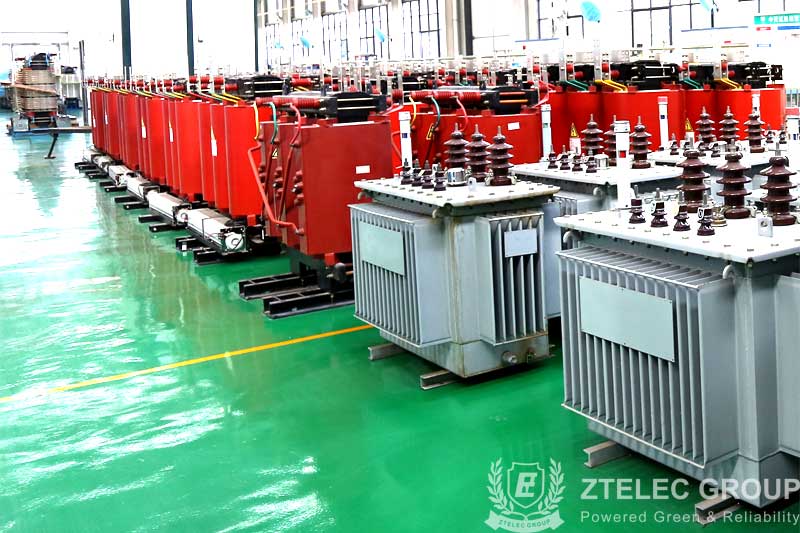Dry-type transformers and oil-type transformers are two major types of transformers, and there is still a big difference between the two.
Dry-type transformers and oil-type transformers are the types of transformers we are more familiar with, and we all need to use them in production and life. We can see many problems in the comparison between dry-type transformers and oil-type transformers. In this way, we can strengthen our use and attention, and we must continue to improve its maintenance. For use, operation, and maintenance There are many benefits in maintenance. So what is the difference and connection between the two?

Price comparison: Dry-type transformers are more expensive than oil-type transformers.
Capacity comparison: Oil-type transformers generally have a larger capacity than dry-type transformers. Dry-type transformers are generally suitable for power distribution. Most of the capacity is below 1600KVA, the voltage is below 10KV, and some have 35KV voltage levels; while oil-type transformers can achieve full capacity and voltage levels from small to large. All voltages.
Use place comparison: Dry-type transformers are generally used in comprehensive buildings (basements, floors, roofs, etc.) and crowded places. Oil-type transformers are used in independent substations. Transformers in box substations generally use dry-type transformers, and oil-type transformers are generally used for outdoor temporary electricity use.
Volume comparison: Oil-type transformers are larger than dry-type transformers. Therefore, when using oil-type transformers, more space is required, and dry-type transformers can only be used when the space is crowded.
Comparison of environmental requirements: Generally speaking, the heat dissipation effect of oil-type transformers is better than that of dry-type transformers. Dry-type transformers are generally insulated by resin, cooled by natural air, and large-capacity is cooled by fans, while oil-type transformers are insulated by insulating oil. The circulation of insulating oil inside the transformer transfers the heat generated by the coil to the radiator of the transformer. ) For heat dissipation.
Appearance comparison: The packaging forms are different. Dry-type transformers can directly see the core and coil, while oil-type transformers can only see the outer shell of the transformer.
Lead form comparison: dry-type transformers mostly use silicone rubber bushings, while oil-type transformers mostly use porcelain bushings. Comparison of load bearing capacity-Generally dry-type transformers should be operated at rated capacity, while oil-type transformers have better overload capacity.
In general, the fundamental reason for the difference between the two is the different cooling medium. Oil-type transformers use transformer oil (of course, other oils such as β oil) as the cooling and insulating medium, while dry-type transformers use air or other gases. Such as SF6 as the cooling medium. Oil-type transformers place the body composed of iron core and windings in an oil tank filled with transformer oil. Dry-type transformers often encapsulate the iron core and windings with epoxy resin. There is also a non-encapsulated type, which is more used now. The windings are impregnated with special insulating paper and special insulating paint to prevent winding or the iron core is damp.
If you are attractive to our products, please send us a message and we will contact you as soon as we receive it. Email: info@ztelecgroup.com Whatsapp: +8615716749170